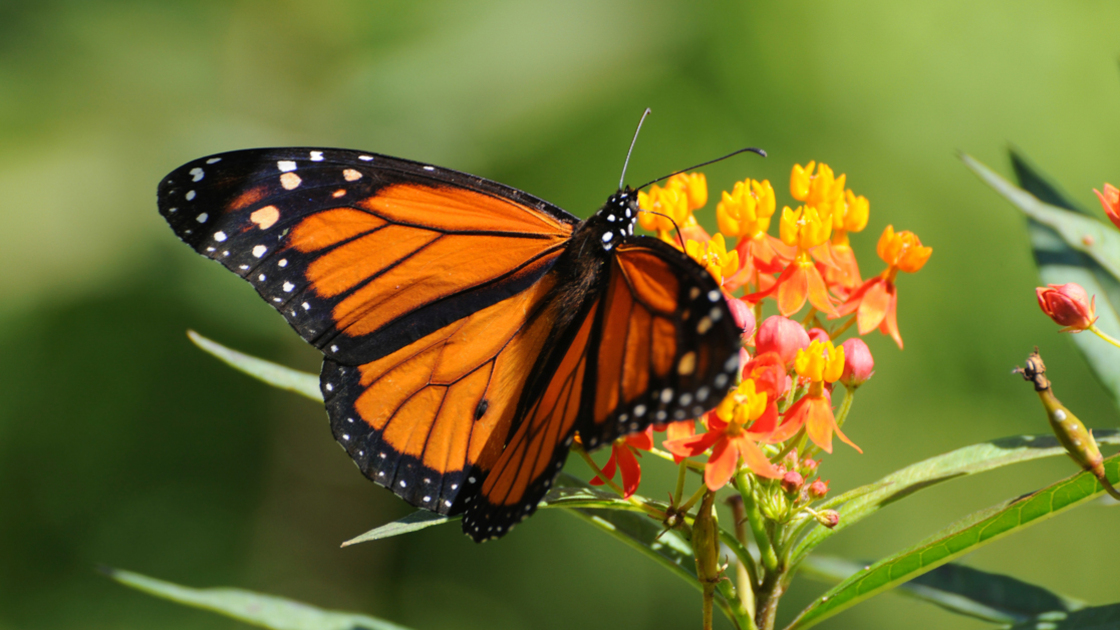When I was little, one of my favorite things to do was to catch butterflies. My mom had planted big flowering bushes in the front of our house that attracted them, and I would take my net and spend hours trying to catch a beautiful butterfly in it. It was all fun and games for me then, and I didn’t give a second thought to the complexity of the creature I was diligently pursuing. Little did I know that I was handling an intricate system—specifically, the butterfly wing.
When the butterfly emerges from its chrysalis, its wings are wet and wrinkled. The butterfly needs to expand them as soon as it emerges so that the wings can dry out. To do this, the butterfly’s body acts as a pump and forces fluid through a network of tube-like veins. As the veins fill with fluid, the wing expands and the surface slowly stretches—just like a balloon does when being filled with helium.
Butterfly wings are made of thin layers of the same protein that makes up your hair and nails—keratin. On top of these thin layers are either rectangular, teardrop or feather-shaped scales. Now, when someone mentions scaleslike I just did, the immediate reaction is to usually think of fish scales. But these scales are arranged more like hairs. They are so small that there can be up to 600 individual scales on just one square millimeter of the wing. Think about the thousands of scales on just one wing!
The scales are responsible for protecting and insulating the butterfly wing. They also help the flow of air to glide smoothly over the wings as the butterfly travels. They are essential to the life of the butterfly because they help acquire the heat needed for the butterfly to survive and fly. Butterflies are cold-blooded, so they need to be warm for their bodies to function normally. If enough of those scales were missing, it would be harmful. I wish 9- year-old Rachel had known that because sometimes my tactic for catching the colorful insects was to pinch the two wings together with my forefinger and thumb.
Most likely, you think of the really colorful species when someone mentions butterflies. Vibrant and drab alike, the scales are the source of the butterfly’s colors. Did you know that there are ultraviolet patterns in some wings that we can’t see, but that many other butterflies can? And even though we might like the more brilliantly colored butterflies the best, the drab-colored wings have an important role. They camouflage the butterfly and help it blend into the environment, hiding it from any predators. Some butterflies, like the Australian Leafwing, have wings shaped andcolored like a leaf. Never fear, because God designed a way to protect the colorful butterflies as well. Many brightly colored butterflies are bad tasting and semi-poisonous. Some wings have big spots that look like eyes to resemble larger animals (like an owl) to scare away the pesky things trying to eat them.
There’s a lot that goes into composing a butterfly wing. And that’s just the wing! Imagine what the rest of the body must be like. But while considering that, think about all the detail and planning that must have gone into it. And then consider the amount of time and planning that went into creating us! All of God’s creations give us a glimpse into His mind and the way He thinks. It is a testimony to His great and tremendous power. Psalm 139:14 reminds us that we are fearfully and wonderfully made. The amount of time that God took to plan and design is unknown. But when you look into something as small as a butterfly wing, it’s clear that God was detailed and precise—making sure that everything was perfect and pleasing to Him.
God made us in His own image, and even now, He is in the process of teaching us how to think like He does. Think about the time in the near future when we will be able to create like Him. The possibilities are endless! Soon, we will create alongside our Creator, helping Him to beautify and sustain all things for all eternity.
